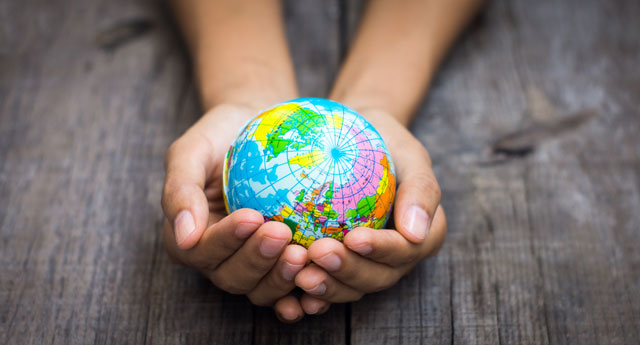The United States is currently in the grips of a powerful drug epidemic, lead by prescription opioids and heroin. New studies are constantly being released that show the disturbing and record breaking magnitude of increased drug use, drug addiction, and drug overdose deaths. The overdose death rate in 2008 was four times the rate of 1999 and there is little hope that problem is getting any smaller. In fact, drug overdose deaths rose nearly 20% just from 2015 to 2016 and drug overdose is now the leading preventable cause of death among American adults.
The United States is not the only country in the grip of a drug epidemic though. Today, all around the world, many countries are trying to figure out ways to reduce crime, public health costs, and preventable deaths caused directly by sharp increases in drug abuse. In Europe, addict-friendly tactics in favor of addiction treatment and harm reduction centers, like supervised injection sites, are gaining popularity and funding. On the other hand, the Philippines has launched an aggressive and bloody drug war aimed at simply executing drug users, dealers, and smugglers alike. Regardless of the tactics used, organized criminal organizations worldwide are becoming more sophisticated, resulting in increased drug smuggling and manufacturing to feed an ever-growing demand.
So, what are the countries with biggest drug problems?
Iran
Iran is often considered one of the most oppressive countries in the world. It is often punished with heavy sanction from the United States and United Nations. Due to its ineffective government, there is very limited funding available to fight addiction or treat it. It is also a strategic location in the Persian Gulf for transshipment of heroin coming from Southeast Asia and on its way to Europe, meaning the country is inundated with the drug. The availability of heroin coupled with the poor living conditions of the country’s citizens makes a perfect recipe for a detrimental drug epidemic.
Additionally, Iran has recently seen an increase in synthetic drug use. Drug labs across Asia and the Middle East are developing cheap designer drugs to mimic popular illicit drugs, which is proving to be very appealing for the country’s massive poor population. These drugs have had very little research done on them and they are often highly addictive.
The United Kingdom
In the UK, like many nations, has seen increased rates of prescription painkiller and heroin consumption, though this is not their biggest problem. Alcohol is continuing to be a major problem in England with an estimated 1.6 million people dependent on alcohol. It is almost estimated that more than 50% of adults in the UK binge drink at least once a week. The UK has taken very limited action against alcohol, likely because of the deep and long lasting social norm of daily drinking and occasional heavy drinking.
France
Like the US, France has a very strong appetite for opioids, specifically prescription painkillers. In regards to prescriptions, France is actually suffering a stronger drug epidemic than the United States. In France, it is much easier to obtain prescription drugs due to their healthcare system and light regulation. Powerful prescription opioids can be as little as one-third of the cost of the same drug in the US. Benzodiazepines are also highly popular in France, which are extremely addictive and cause a dangerous physical dependence.

Russia
Russia has historically been known for its high consumption of alcohol, namely Vodka. The alcohol problem in Russia continues to be as high as ever and it’s estimated that nearly all men who do not reach the age of 55 die from alcohol related complications, like liver disease, alcohol poisoning, alcohol withdrawal, or accidents attributed to alcohol intoxication. Russia is also facing a significant illicit drug epidemic due to its porous border with Afghanistan, the world’s largest producer of heroin.
Philippines
In the Philippines, President Duterte declared he would eradicate drugs and drug addiction in his country via an aggressive and merciless war on drugs. The country does not have as severe as a drug problem as the United States, but the use of methamphetamine in the island nation has increased and triggered a public cry for action. The country has begun to execute suspected drug users and dealers on the spot with no trial. The president has even executed government officials, mayors, and many political opponents claiming that they had links to drug cartels. Though they might have less drug abuse rates than other countries, a drug epidemic has directly caused severe consequences and political turmoil for the nation.
So What Works?
The countries with the highest success in reducing addiction rates and public consequences due to drugs are addict-friendly nations. Countries that allocate significant funding to health care, addiction treatment, harm reduction, and education usually see significant reduction in substance abuse. Switzerland and the Netherlands saw severe drug epidemics in the 1980s and 1990s but, after several drug reform laws that reduced punishment, coupled with the introduction of harm reduction centers, the countries were able to curb the crisis and reverse the popularity of illicit drug use.
How Pinnacle Can Help
One of the most effective ways to beat addiction is to start recovery at an addiction treatment center. Pinnacle Treatment Center is a comprehensive program that addresses the root causes of addiction and how to overcome it. Pinnacle provides intensive therapy along with lectures and exercises for life skills and relapse prevention. Patients will be involved in group therapy sessions as well as 12-step groups like NA and AA. Pinnacle will even help manage aftercare planning to ensure their patients remain on the right path after treatment. A well-rounded program like this is the best way to start recovery today and take control of your life. Call us at drug rehab Utah today on 1-866-301-0573..






